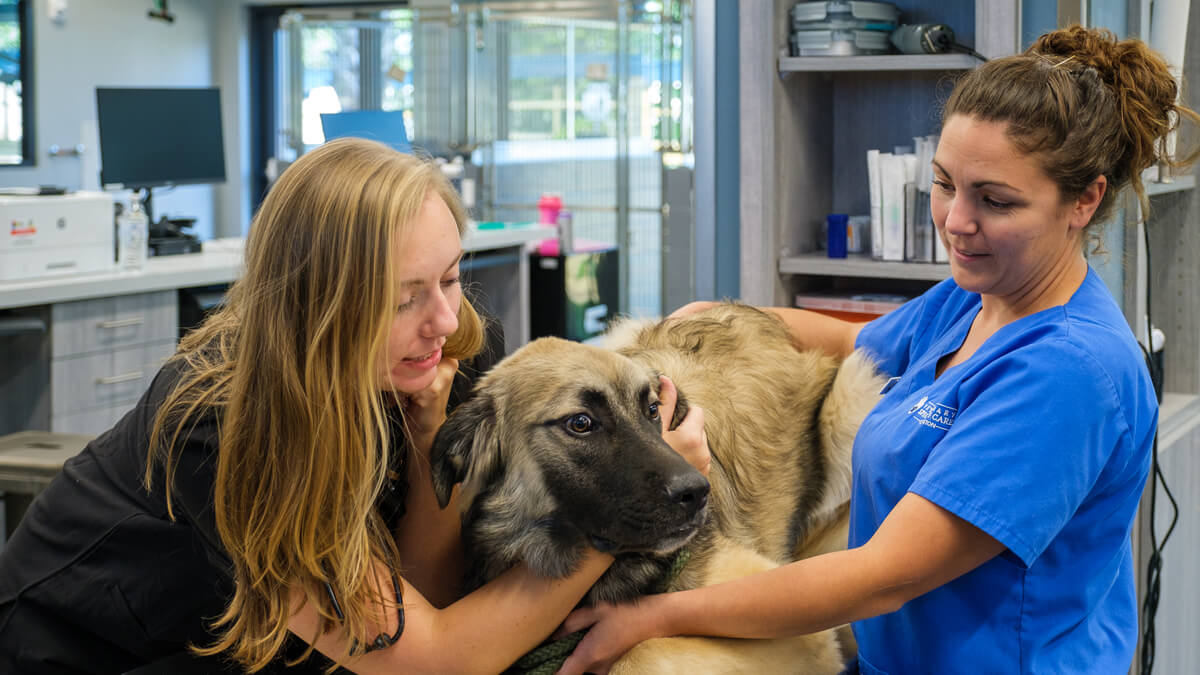With the COVID-19 pandemic beginning to recede and many of its restrictions being limited, people are planning trips once again, whether for long-postponed vacations or simply to visit with friends and family they’ve been separated from for two years or more.
Of course, these very same families are pet lovers as well, and they understand that their dogs and cats may be just as eager as they are for trips that will give them a change of scenery and reunite them with distant two-legged and four-legged companions.
Some pets have been traveling little or not at all, so a few important recommendations are in order to keep them healthy and safe. Other pets have traveled more extensively, but a few targeted reminders will make their trips good ones as well.
Although some Lowcountry pet lovers care more for exotic animals, most have canine or feline animal family members. So for a few timely tips on traveling with dogs and cats, HealthLinks Charleston reached out to Blue Pearl Charleston – formerly Veterinary Specialty Care – a member of the Blue Pearl veterinary group, for guidance.
We posed a series of oft-asked questions to the veterinary doctors at VSC through their chief spokesperson, Natalie Garber, consumer outreach specialist at Blue Pearl Charleston, and she consulted with the hospital’s many specialists to come up with some sound recommendations.
- First and foremost, before taking a dog or cat on a long trip – no matter how you plan on traveling – an examination by a veterinarian before departing can head off any potential health issues. That visit also gives the veterinarian the opportunity to update any documents a pet should need, such as a dog’s rabies certificate.
- Having your pet microchipped, if it isn’t already, also is always a sound practice. No one wants to lose a pet because it’s collar and identification may have fallen off.
- Taking pets on automobile trips can be the simplest way to travel with them. Most dogs like a comfortable car ride, and most cats will at least tolerate one. The best bet for dogs is a restraint designed for them – not just a seat belt – preferably in the back seat. Cats are generally more comfortable in a crate.
- For both dogs and cats, make sure to carry some of their favorite snacks as well as plenty of bottled water to keep them from drinking from unknown sources. A few of their favorite toys from home will help as well. And take a break every two hours or so to let them stretch their legs and “take care of their business.”
- Travel by air, rail or bus introduces some different challenges. Before making any plans, check with these carriers in order to comply with their specific policies. If you can’t find these on their websites, call customer service to make sure that your pet will be welcome and safe in transit.
- Some airlines, for example, permit small – under 20 pounds – animals to travel in the cabin. Others do not. Your veterinarian can help you decide whether your pet needs to be sedated before travel, especially if it will be crated and carried as cargo.
- Service animals fall into a different category, so check the carrier’s regulations before attempting to board. Some allow “emotional support” animals. Others do not.
“Our doctors agreed that it’s not only possible to take your dogs and cats on trips with you,” Garber said. “It’s often desirable as well.”
She concluded, “After all these long months of home confinement, they can use a change of scenery as much as you can.”
By Bill Farley







